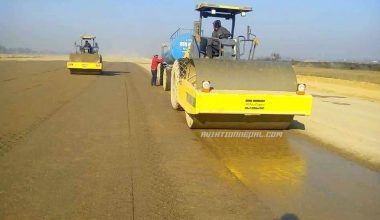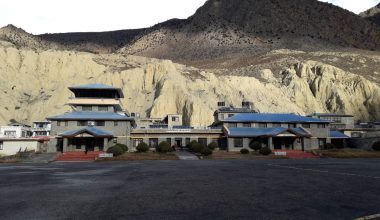-KATHMANDU
Worldwide flight tracking and data provider AirNav Systems (RadarBox24) is upping its game, announcing plans to offer space-based aircraft tracking by next year.
The company’s space tracking will be possible thanks to new nano-satellites scheduled for launch later this year and in 2019, says chief executive Andre Brandao. Those satellites enable space tracking through the automatic-dependent surveillance broadcast (ADS-B) network, AirNav says.
The satellites will listen to every ADS-B signal transmitted by every aircraft, and will relay them all to 70 ground stations (the first will be in Accra, Ghana) that will in turn send them to data collection centers in Tampa, New Jersey and London. Looking down – or rather, listening – from above, the tiny satellites have a greater reach than ground-based listening systems, which are restricted to line-of-sight.
The 20-year-old Tampa-based company already operates an ADS-B network composed of some 8,000 ground receivers worldwide, and also operates the tracking website RadarBox24.com.
But adding satellite technology will enable tracking worldwide, even in the most remote locations on earth, says Brandao. The company is likewise releasing new products that will let customers track aircraft more accurately and more easily – by simply entering a tail number into the website, Brandao says.
For an operator that needs to know just where their airplane is, they can track it on the internet after subscribing to AirNav Systems RadarBox24 Business for just $79 per month per airplane. Their aircraft need no extra equipment or any modifications, as they are already transmitting ADS-B.
-Photo: Live Flight Tracking by RADARBOX24 of VNKT Airport in SkyVector VFR Radar Map
AirNav System (RADARBOX24) ADS-B Comstation equipment installed in Nepal are providing significant data to flight crews’, Aviation Delegates, Aircraft Operator and Aviation Enthusiastic about the real situational awareness by making them aware about their relation to the other aircraft in real time. Tribhuvan International Airport, Nepal Real-time surveillance in the picture provides more frequent information like radar, common to all the participants that make the aviation far safer both airborne and on the runway.
For over 2 decades AirNav Systems has been committed to creating the industry’s most reliable and extensive ADS-B network on the ground. Our excellent worldwide coverage stands testament to this. But we’re always looking to push limits and improve. And that’s why we’re going beyond the stratosphere – into space.
Traditionally, ground based ADS-B receivers along with Radar have been used to track aircraft. This method, however, has had its own set of challenges since ADS-B is based on the line of sight principle. Mountains, buildings, vast water bodies and other obstructions can significantly decrease a receivers range and ability to receive transponder emitted signals. Thus limiting the receivers’ coverage to a small geographic pocket (150 nautical miles on average).
Space-based Radarbox24 will come on stream gradually; by the third quarter next year it will provide full coverage between Latitudes North 30. According to AirNav, the System is fully compliant with FAA, EASA and ICAO requirements.
As in the case of the countries like Nepal, where most of the terrain is mountainous and out of the radar coverage, the air crashes (CFITs) are quite frequent. The flight is completely in the hands of the pilot, and the loss of communication with the ATC, as well as, the poor visibility makes the scenario worse. The implementation of the ADS-B technologies in such aircraft can completely eliminate such cases of failures and can be of appreciable importance in the sector of aviation.
Federal Aviation Authority (FAA) 2020 mandate requires the installation of ADS-B Out equipment by the year 2020. This means that all aircraft flying in Class A, B & C (Class E – special cases) airspace are mandatorily required to be fitted or equipped with a transponder with ADS-B out capability. Helicopters, turboprops & business jets will also be required to be equipped with ADS-B out transponders.
“We believe this brings a simple solution to flight tracking,” says Brandao.”









